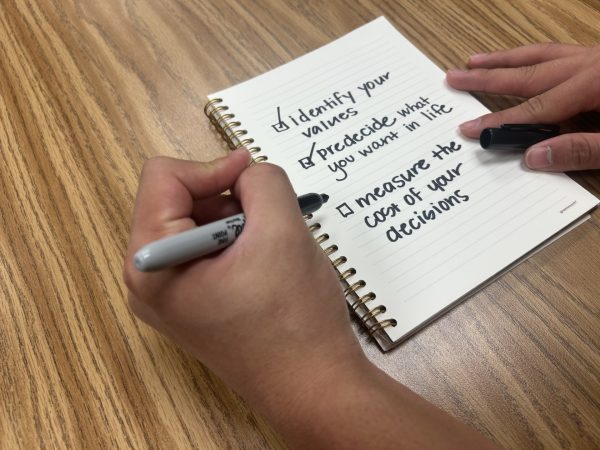Low pay for teachers is harming our future
“Although the voices of many teachers and staff have not been heard, we can still make a difference and advocate with them. It is our responsibility to raise our voices with the teachers who want better rights for themselves and their students when they have not been granted these rights and to push for a raise in taxes,” said Claire Conover.
Since the age of five, the majority of our youth has been spent going to schools. Whether it be private, religious or public schools, we were all learning the similar concepts. But what if the states’ negligence to the people teaching our future is harming us?
As of 2018, there have been many protests by teachers all across states demanding better pay. While the contract for teachers pays them for only eight hours of work a day, they work more than what their contracts entail, which has been the main source of indignation.
PDK International, a professional association for educators, polled 2,389 American adults, including 1,083 parents of school-age children and 556 public school teachers. 50 percent of those 556 teachers say they have considered leaving the profession.
Class sizes have been larger since the Great Recession, which means that teachers have had a larger workload. Schools have less room for small classes even though they are proven to be beneficial to both the teachers and the students.
Researchers have found that reducing class size can influence socioeconomic factors including earning potential, improved citizenship and decreased crime and welfare dependence,
said the National Council of Teachers of English.
In Nov. of 2019, many teachers in Chicago were on strike, protesting in the streets for a better working environment and for more staff in all the schools. After the 11-day strike, Chicago Public Schools and the Chicago Teachers Union made an agreement to reduce class sizes, employing more qualified staff and more.
“We’re proud of what we accomplished,” said Jesse Sharkey, Chicago Teachers Union President. “We moved the needle on educational justice.”
Overall, the conduct of the states have been poor and inefficient. The workload they give their staff only increases, while the teacher retention rate decreases. The inability to adapt and provide to the basic needs of their employees will cost them valuable employees and hit their quality of education.
According to the Wall Street Journal, U.S. public education employees had the fastest resignation rate in 2018 since the Department of Labor began its measurements in 2001.
Angela Watson, a previous school teacher, quit her job in the middle of the school year for the same reasons many others have quit.
“It was in that moment,” said Watson. “that I knew my job was not worth the energy expenditure I had to put out everyday.”
Although the voices of many teachers and staff have not been heard, we can still make a difference and advocate with them. It is our responsibility to raise our voices with the teachers who want better rights for themselves and their students when they have not been granted these rights and to push for a raise in taxes.

Easton Plourde is a senior and a second-year staff writer for the Statesman. When Easton isn’t designing colorful pages for the Statesman, he can be...







